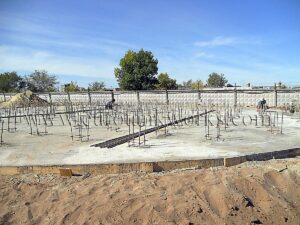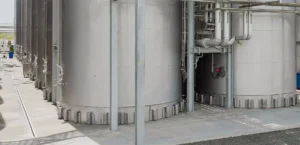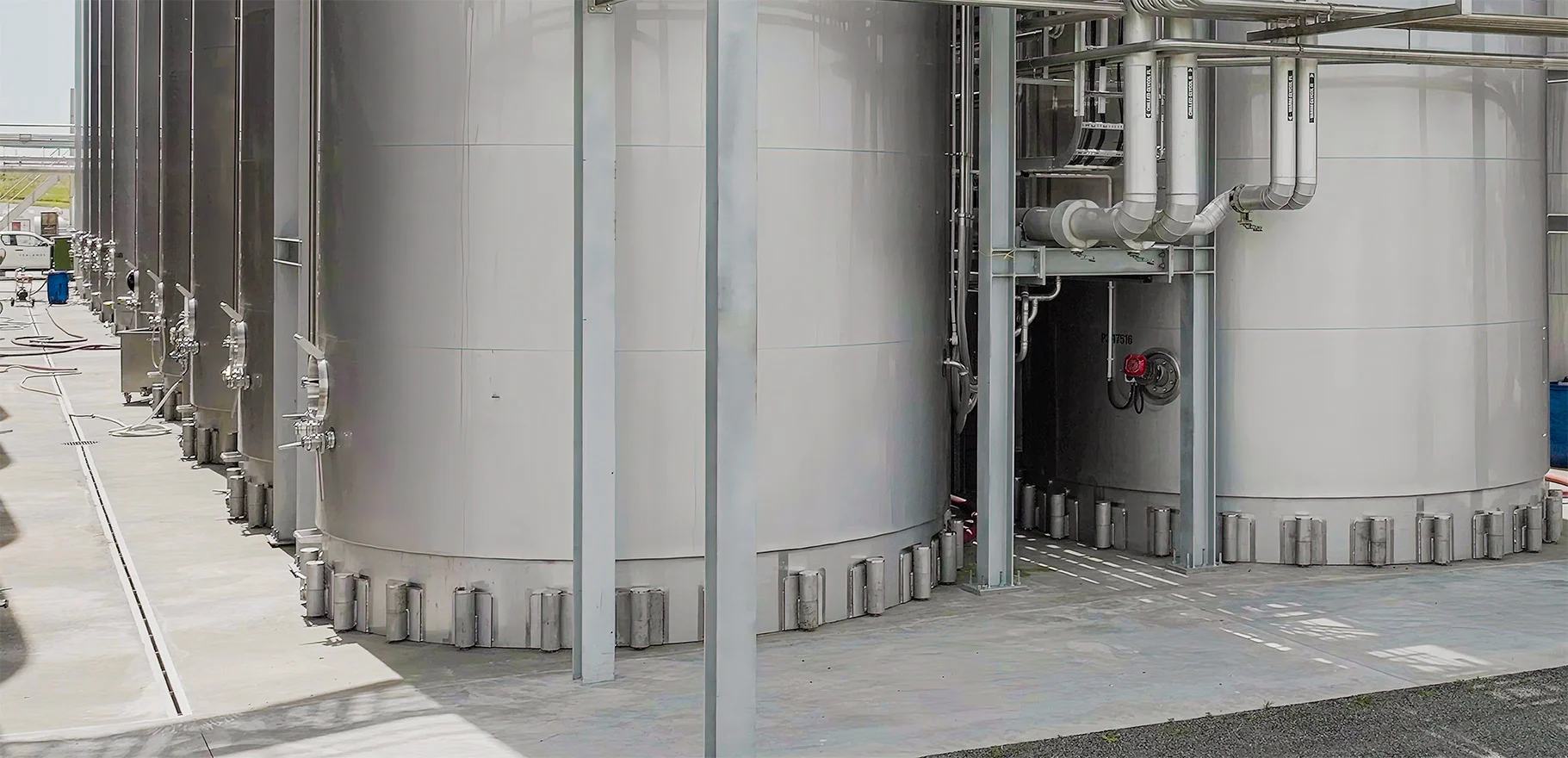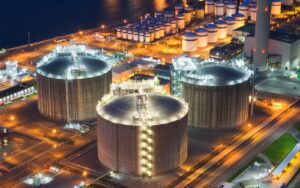Through As an engineer designing aboveground storage tanks in seismically active regions, achieving seismic stability and resilience is one of your top priorities. You know that even a moderate earthquake could damage or destroy an improperly designed tank, causing environmental harm, economic losses, and risks to public safety. However, with careful engineering and adherence to the latest codes and standards, you can design tanks to withstand the ground shaking and forces of the largest expected earthquakes.
This article provides an overview of critical design considerations and methods for creating earthquake-resistant aboveground storage tanks. From anchoring and bracing techniques to materials selection, you will learn proven strategies for building seismic resilience into your tank designs. With the information presented here, you can have confidence your tanks will maintain integrity and continue operating even after a seismic event. By following these best practices, you are taking an important step to protect people, the environment, and your company’s assets.
Above-ground Fuel Storage Tanks Designed for Seismic Loads
To withstand the immense forces of earthquakes causing fuel tank damage, aboveground storage tanks require a resilient and robust design. Several factors must be considered when engineering tanks for seismic stability:
Tank Foundation
The foundation provides the base support for the tank structure. To ensure seismic resilience, you must firmly anchor the foundation to stable soil and reinforce it to prevent shifting during ground motion.Both concrete ringwall and pile foundations are suitable for seismic areas. Pile foundations embedded deep into the ground are typically more resistant to lateral forces.

Anchorage
The tank must be securely anchored to the foundation to prevent toppling during an earthquake. Anchor bolts, welds, and concrete anchor straps are commonly used to bind the tank to the foundation. Multiple anchors spaced evenly around the tank base provide the greatest stability.
Bracing
Bracing, such as circumferential rings and vertical ribs, reinforces the tank shell and prevents buckling. Circumferential rings circle the tank shell horizontally, while vertical ribs run up and down. Bracing should be spaced based on the tank diameter and material to optimize strength and support.
Tank Shell
The tank shell must be constructed of a material suitable for containing liquids in a seismic event. Steel, concrete, and fiberglass are typical options. Steel and concrete provide the most seismic resistance but require additional reinforcing. Fiberglass shells may require anchorage to a steel or concrete base for stability.
By considering the foundation, anchorage, bracing, and tank shell material, aboveground storage tanks can be designed to withstand even the most turbulent seismic activity while safely containing liquids. With the right seismic design, aboveground tanks remain stable and fully operational even after a major earthquake.
Seismic Base Isolation and Energy Dissipation: Protecting Aboveground Tanks
To protect aboveground storage tanks in earthquake-prone regions, seismic isolation, and energy dissipation are key engineering strategies. Seismic Isolation
Seismic base isolation separates the tank from the ground motion during an earthquake using bearings or pads. This is an effective strategy but requires careful design and installation. Common isolation systems include:
- Elastomeric bearings: Made of rubber, elastomer, or spring steel, these bearings are placed under the tank to absorb seismic energy. They must be properly sized and spaced to support the tank’s weight.
- Sliding bearings: Placed between the tank foundation and subbase, these bearings allow the tank to slide during ground motion while remaining stable. Friction pads or Teflon coatings facilitate sliding. These require an area for the tank to slide without obstruction.
- Rocking wall: A free-standing wall is built under part of the tank’s perimeter. During shaking, the tank can rock on this wall without falling. The tank is secured to the wall to prevent collapse.
Energy Dissipation
Energy dissipation systems absorb seismic energy to dampen the tank’s motion. Common methods include:
- Viscous dampers: Fluid-filled cylinders are placed between the tank and foundation. The fluid absorbs energy as it is forced through orifices during shaking.
- Friction dampers: Steel plates with friction pads are connected to the tank and foundation. Sliding between the plates during ground motion converts energy to heat.
Using seismic isolation, energy dissipation, or a combination of these strategies can effectively protect aboveground tanks during strong earthquakes. With careful design and installation, tank owners in seismic regions can achieve resilience and minimize risks.
Seismic Anchorage and Bracing for Aboveground Tanks

To achieve seismic stability, aboveground storage tanks in earthquake-prone regions must be properly anchored and braced. There are several methods for anchoring and bracing aboveground tanks, including anchor bolts, straps, and frames.
Anchor bolts are steel rods embedded in concrete foundations that secure the tank to its foundation. The anchor bolts should be designed to withstand the forces from the tank during a seismic event. Straps are steel bands that wrap around the tank and attach to anchor bolts in the foundation. Frames are steel structures that surround the tank and attach to anchor bolts. Frames help distribute the forces from the tank during an earthquake across the foundation.
For the most effective seismic design, multiple anchorage and bracing methods should be used together. Anchor bolts alone may not provide enough stability for a tank during strong ground shaking. Straps and frames work with anchor bolts by providing additional restraint to prevent sliding and overturning. Using a combination of anchorage and bracing methods helps ensure the tank achieves the required seismic performance factors for its location.
The seismic design of aboveground storage tanks depends on several factors, including the tank geometry, foundation type, and location. Tanks in high seismic-risk areas, like much of the western United States, require more robust anchorage and bracing than those in lower-risk areas. Local building codes also specify minimum seismic requirements for aboveground tanks based on regional seismicity. Following the latest codes and standards helps guarantee storage tanks are properly anchored and braced to withstand anticipated ground motions from earthquakes.
With the right seismic anchorage and bracing, aboveground tanks can continue operating safely even after a major earthquake. Proper seismic design is essential for building resilient infrastructure and avoiding catastrophic failures. Achieving seismic stability in aboveground tank design helps provide continuous access to critical stored resources when they are needed most.
Best Practices for Aboveground Tank Foundations in Seismic Zones
To ensure seismic stability for aboveground storage tanks in earthquake zones, the foundation design is critical. Following best practices for foundation design and construction will help achieve maximum resilience.
Adequate Anchorage
Securely anchor the tank to a reinforced concrete ringwall or pad to prevent shifting during ground motion. Size and space anchor bolts as specified by the tank manufacturer and local building codes. Ensure that the anchor bolts are securely embedded in the concrete foundation..
Proper Reinforcement
The concrete foundation requires steel rebar reinforcement to withstand the forces imparted during an earthquake. The rebar grid should extend throughout the entire foundation, with higher concentrations around the anchor bolt locations. You must properly tie and support the rebar to keep it in the correct position when pouring the concrete.
Sufficient Thickness
The foundation must be thick enough to support the weight of a full tank while resisting cracking during ground shaking. As a general rule of thumb, the foundation thickness should be at least 1/2 of the base plate thickness. We recommend a minimum thickness of 2 feet for larger tanks. You should also check the foundation edge thickness against local building code requirements.
Quality Concrete
Base Plate Considerations
The base plate is a critical component transferring loads from the tank wall into the concrete foundation. You must size the base plate appropriately for the tank diameter and make it of steel matching the shell material. Anchor bolt holes in the base plate must align precisely with embedded anchor bolts during erection.
Following these best practices for foundation design will help ensure your aboveground storage tanks remain stable and continue operating safely even after a major seismic event. Adhering to the latest building codes and tank standards provides an added level of assurance.
Conclusion
As you have seen, designing storage tanks to withstand seismic events in earthquake-prone regions requires diligent engineering and adherence to strict building codes. By utilizing state-of-the-art construction materials and methods and following the guidance provided in national design standards, we can make aboveground storage tanks resilient in the face of even the most powerful earthquakes.
FAQs: Common Questions About Seismic Design of Aboveground Tanks
Aboveground storage tanks in seismic zones require special consideration during the design process to ensure structural stability in the event of an earthquake. Several frequently asked questions about seismic design for aboveground tanks include:
What seismic hazards should be considered?
Ground shaking, liquefaction, and slope instability pose the most significant seismic hazards for aboveground tanks.. Ground shaking refers to the vibration of the ground during an earthquake. Liquefaction occurs when loose, water-saturated soil loses strength and stiffness, causing the soil to behave like a liquid. Slope instability refers to landslides and other types of ground failure on sloped sites. Appropriate site evaluation and geotechnical investigation are needed to assess seismic hazards at the tank location.
How do seismic waves cause damage?
By a property called dispersion, surface waves of different wavelengths travel at different velocities. It is the surface waves which cause most property damage because surface waves produce more ground movement and travel more slowly, so they take longer to pass.
How is an aboveground tank anchored to resist seismic forces?
Anchor bolts, straps and saddles, and ring foundations are several methods for anchoring aboveground tanks.
What are some key seismic design considerations for aboveground tanks?
Some important seismic design considerations for aboveground tanks include:
- Providing anchorage and bracing to resist lateral forces from ground shaking
- Allowing the tank walls and floor to withstand stresses and strains from seismic loading
- Designing pipe connections to remain intact during seismic events
- Accommodating seismic displacements between the tank and pipework
- Ensuring stability on sloped sites through proper foundation design
- Protecting against soil liquefaction by using deep pile foundations where needed
Following proper seismic design standards helps achieve resilience and minimize damage risks for aboveground tanks in earthquake-prone regions. Careful evaluation of site conditions and hazards, anchorage methods, and structural design considerations can provide stability and operational reliability even after a seismic event.




